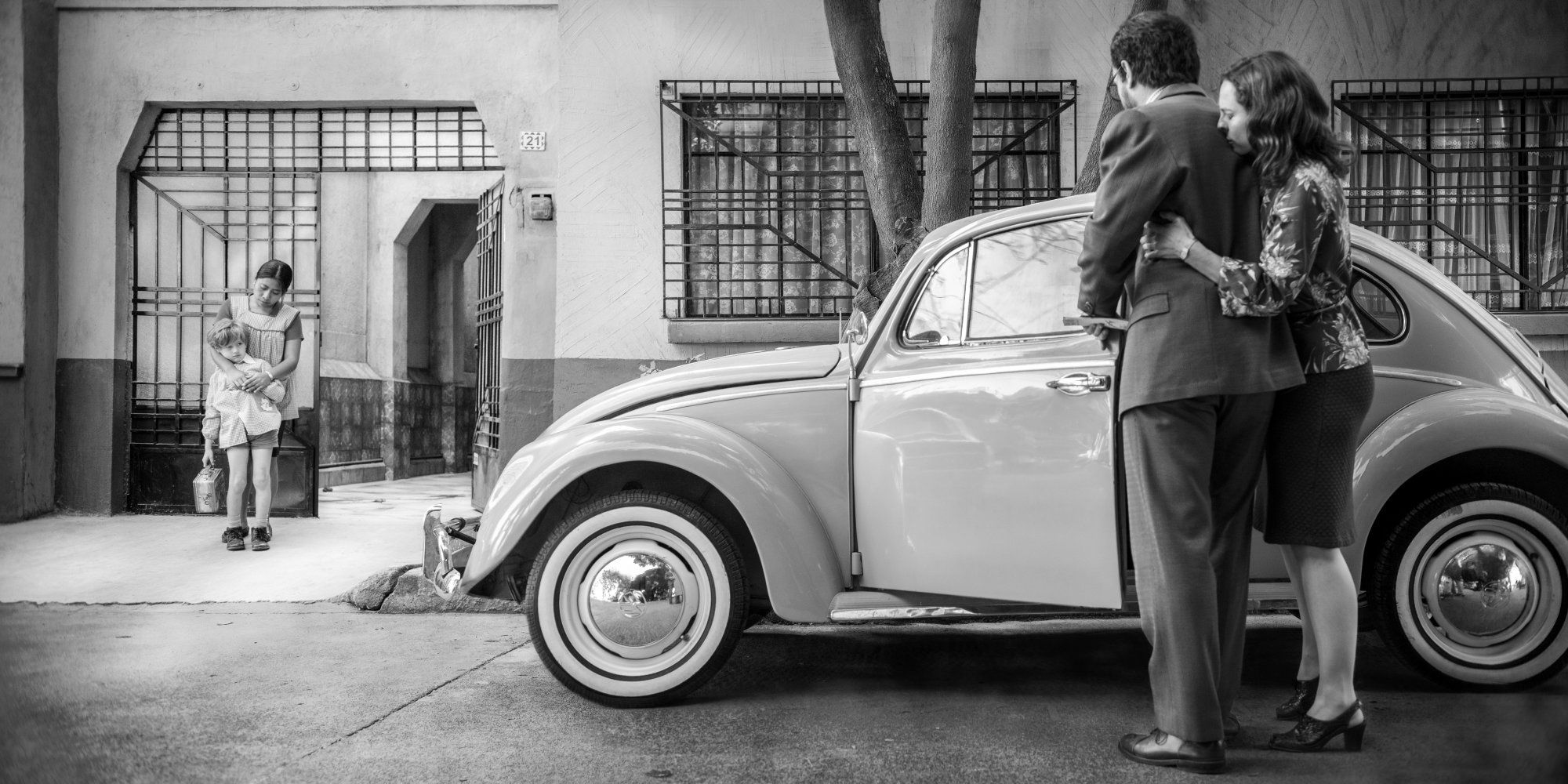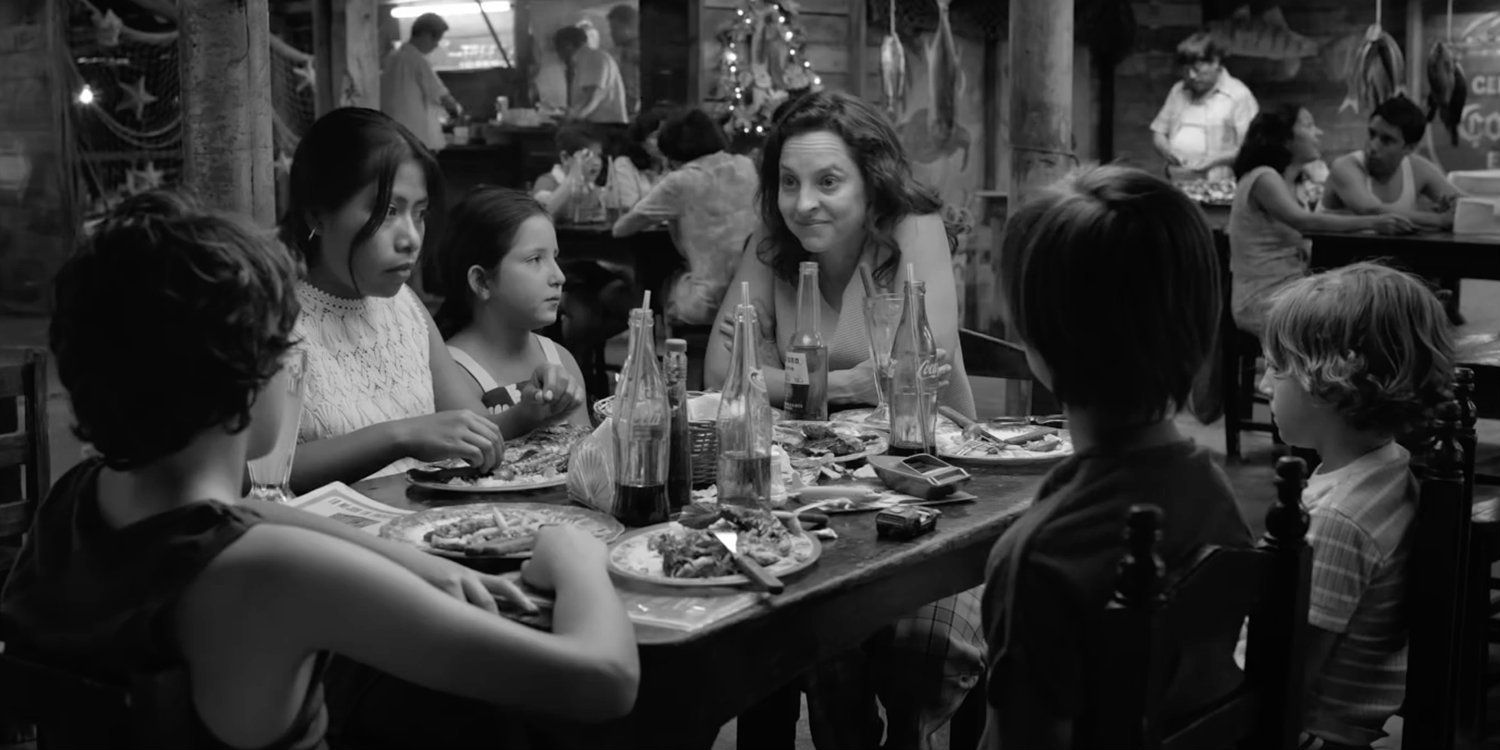
Yet another impressive technical accomplishment for Cuarón, Roma explores the filmmaker's memories of childhood in a truly immersive and vivid manner.
The much-awaited followup to Alfonso Cuarón's 3D space thriller Gravity (which netted the filmmaker Oscars for his editing and directing, four years ago), Roma is a semi-autobiographical drama inspired by Cuarón's experiences growing up as a child in Mexico City in the 1970s. In addition to being his most personal film to date in terms of subject matter, Roma is also the storyteller's most hands-on project yet - in the sense that he was not only the film's writer and director, but also its co-editor and cinematographer. The Netflix movie has already won major awards at festivals in Venice and Toronto (among others) and is now getting a limited theatrical rollout, which will allow even more people to enjoy Cuarón's drama in its proper big screen glory. Yet another impressive technical accomplishment for Cuarón, Roma explores the filmmaker's memories of childhood in a truly immersive and vivid manner.
Set primarily in Mexico City (the Colonia Roma district, to be exact) between 1970 and 1971, Roma explores the lives of a middle-class family from the perspective of their live-in housekeeper and maid, Cleo (Yalitza Aparicio). Cleo spends her days caring for the household - including, the family's dog - and children of Sofia (Marina de Tavira), an academic, and Antonio (Fernando Grediaga), a doctor. Meanwhile, in her off-time, Cleo hangs out with Adela (Nancy Garcia), the family's other maid, and even dates a young martial arts-obsessed man named Fermin (Jorge Antonio Guerrero).

However, despite Cleo's best efforts to keep things running smoothly, it becomes clear that Sofia and Antonio's marriage is starting to crumble - even before Antonio leaves on a "business trip to Quebec" that he may or may not ever return from. At the same time, Cleo is dealing with problems in her own love life, stemming from her relationship with Fermin. And if all that wasn't enough, Mexico City itself soon becomes a dangerous place to live, as the tensions between wealthy landowners and their workers reach a (violent) breaking point.
Even more than his previous Spanish-language Mexican indie films (see: Sólo con Tu Pareja, Y Tu Mamá También), Cuarón's Roma really harkens back to the classic Italian Neorealism filmmaking tradition, in the way it casts newcomer actors and focuses on the struggles of the working class. The movie is all the more unusual in the way it tells a coming of age story from the perspective of someone like Cleo; a character who, in pretty much any other autobiographical drama, would serve as a supporting player in the narrative, rather than the protagonist. This allows Roma to recount a familiar tale about a family collapsing at the seams in a fashion that's not only unique, but is genuinely empathetic in its treatment of someone like Cleo and those similar to her, whose stories often go ignored by historical memoirs. Roma's juxtaposition of Sofia and Antonio's crumbling marriage with the social instability in Mexico City (circa the 1970s) ends up being all the more effective and fascinating for it.

Roma further brings to mind Italian Neorealist classics like Bicycle Thieves and (appropriately) Rome, Open City with its fly on the wall filmmaking style. Cuarón's decision to shoot the movie in black and white pays off in spades here, resulting in one of the most visually gorgeous cinematic experiences of the year. Indeed, the film's cinematography marries beautiful still shot compositions with long takes and steady pans that often (intentionally) blur the scenery in a way that brings to mind what an actual memory of a time and place looks like. If that's not reason enough to see Roma in a theater (if possible): the sound design is as rich as the movie's visuals and makes its bustling city backdrop feel all the more tangible with its lack of score and emphasis on smaller noises (be it soapy water trickling down a drain or planes soaring distantly overhead). Production designer Eugenio Caballero (A Monster Calls) and costume designer Anna Terrazas (The Deuce) also deserve to be recognized for making the film's scenery feel all the more authentic, via their meticulous attention to detail.
As stunning as the craftsmanship is, the actors in Roma are (of course) a key part of the film's success too. Despite their lack of big screen experience, newcomers Aparicio and Garcia are quietly compelling in their performances here, as is fellow newbie Verónica García as Sofia's mother, Teresa. Between those three and Tavira (who has a long resume of work in Mexican film, TV, and theater), the main Roma cast brings a sense of naturalism to the proceedings that matches comfortably with Cuarón's general storytelling approach and, thusly, allows the drama to work as a thoughtful ode to the lives and sacrifices of the women who raised the filmmaker in real life. Guerrero and Grediaga have far less screen time by comparison, but are equally capable in their supporting roles as the generally-absent (yet realistic) men who let their loved ones down, time and time again.

All of that being said: Roma is, in some ways, a film that's easy to celebrate for its masterful craft and noble intentions, yet somewhat difficult to engage on the same level emotionally. Part of the problem is that Cuarón was arguably given a little too much artistic leeway here, resulting in a movie that sometimes lingers for so long on certain details and sequences that it actually detracts from the character-based moments of drama. Similarly, the second half of Roma in particular doubles-down on the melodramatic plot beats, to the degree that it starts to feel almost contrived at times, compared to the more realistic action of its first half. These issues further impact the film's pacing, which can be excessively languid at times, even for a story that's primarily told through quieter moments and focuses on capturing the intimate details of everyday life. As a result, Roma falls somewhat short of the masterpiece mark that it was clearly going for.
Of course, an almost-masterpiece by Alfonso Cuarón is obviously still something worth celebrating, especially something as personal as Roma. The fact that it's a low-budget Mexican production shot in black and white - one that will be available to a mainstream audience thanks to Netflix - makes the movie all the more special and worth supporting, in turn. While Roma can certainly be appreciated as well at home as on the big screen, it was clearly meant to be viewed in the largest format available. So again: those who have the chance are encouraged to check the film out in all its theatrical glory.
TRAILER
Roma starts playing in NY and LA theaters on Wednesday, November 21. It will expand to additional markets over the three weeks thereafter, before it begins streaming through Netflix on Friday, December 14. It is 135 minutes long and is rated R for graphic nudity, some disturbing images, and language.
Let us know what you thought of the film in the comments section!
from ScreenRant - Feed https://ift.tt/2FlLa4U



0 Comments